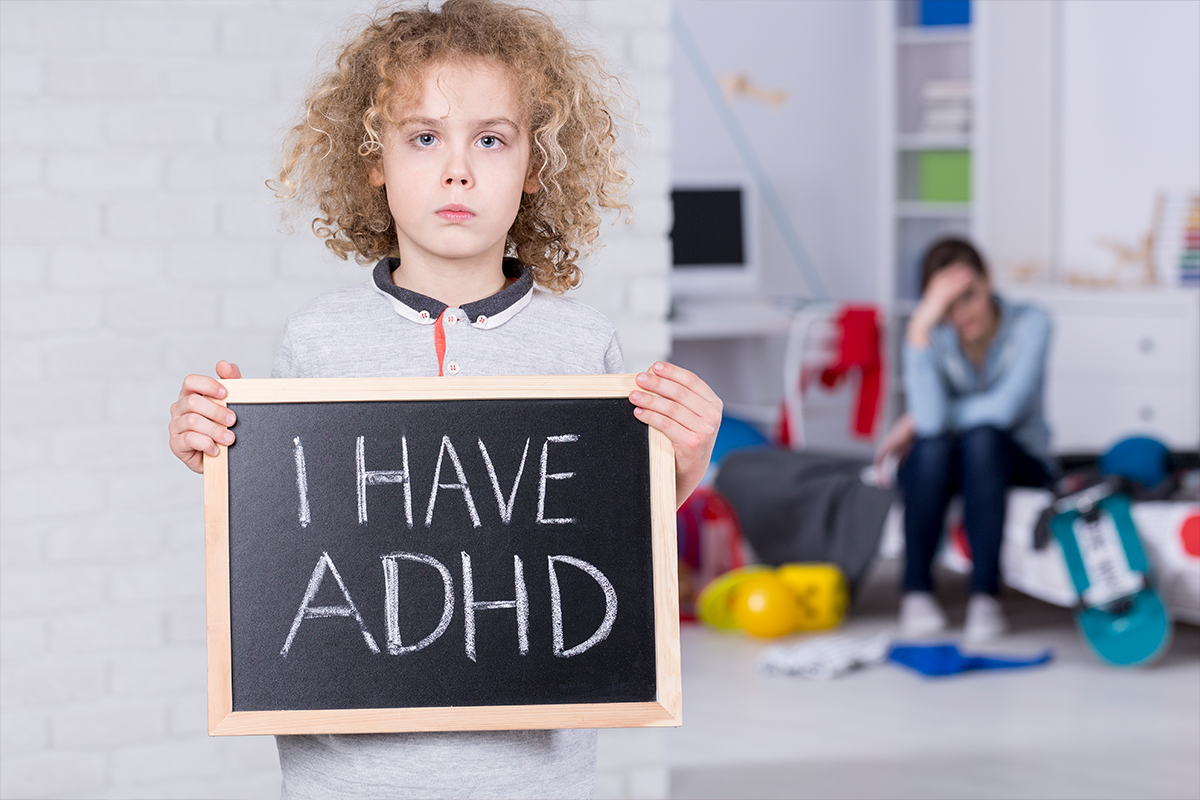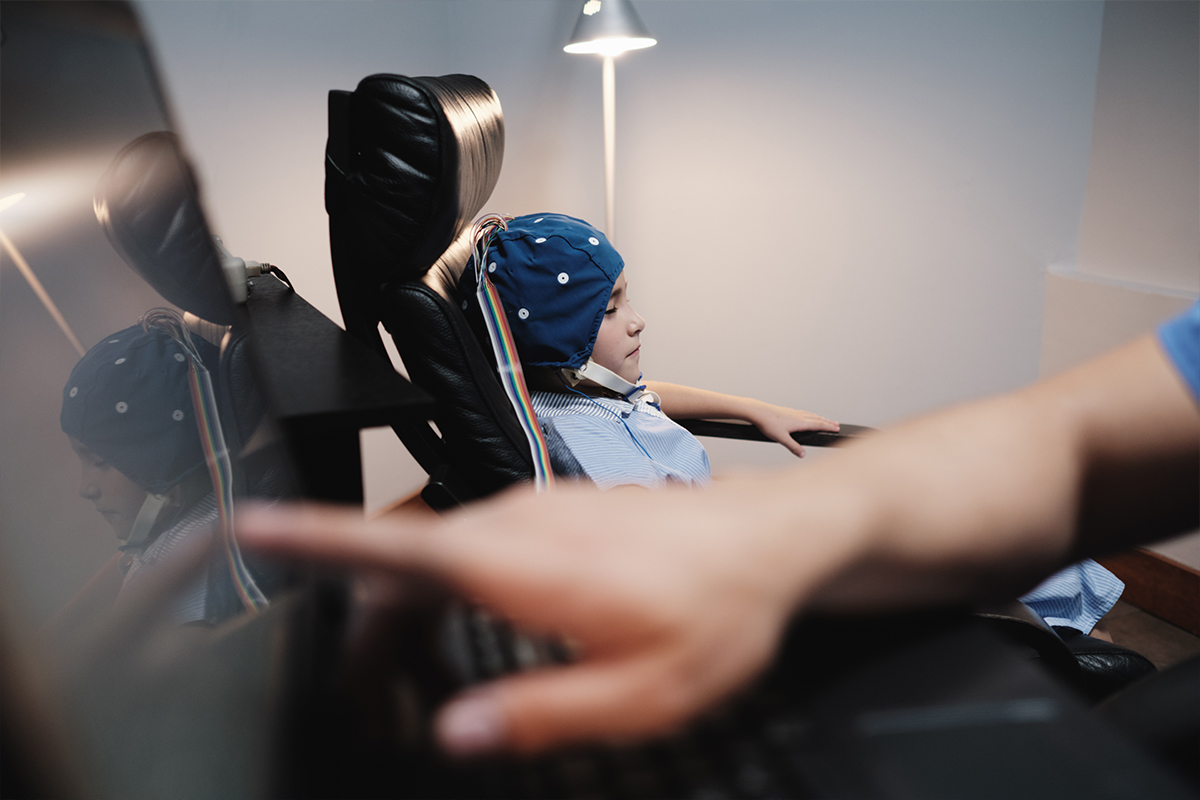
The History of Neurofeedback: Part I
How does Neurofeedback work? Why is it so effective in treating brain conditions as varied as ADHD, traumatic brain injury, seizures and learning disabilities? And so on. In the interest of answering these and other questions, we thought we’d start with the history of this remarkable, non-medicinal treatment for the brain known as Neurotherapy now available in Chicago.
Learn More
Natural Treatment For Attention Deficit Disorders Without Medication
When I was growing up in the 1970’s, there were always boys who were hyper. They couldn’t control their behaviors, responded impulsively to everything placed in front of them, and acted as if driven by little motors constantly running full speed inside their bodies. There were also boys who stared off into space on a regular basis, seeing a whole movie playing behind their eyes. There were girls who flitted around the room like social butterflies, and those who gazed out the window seeing a movie of their own.
Learn More
Neurofeedback For Dyslexia
EEG Neurofeedback For Dyslexia
Our previous blog discussed adult dyslexia, its symptoms, and how the proper testing and diagnosis is important for treatment planning. Along with the proper testing and diagnosis for a learning disability such as dyslexia, certain treatments are available that can improve brain function in a meaningful way.
Neurofeedback training or EEG Neurotherapy targets the symptoms of dyslexia at their foundation – the brain! Often visual, auditory, and/or executive processing deficiencies are present in those with learning disabilities, and neurofeedback directly targets these areas of brain function. Not only can it target the primary symptoms, but also the secondary symptoms of learning disabilities including social emotional and self esteem difficulties. Neurofeedback produces long-term changes in an individual’s functioning and mental health.
There is a great deal of research that supports EEG neurofeedback training for those with learning disabilities, cognitive deficits, and emotional dysfunction. In addition to this research, there is support for treating symptoms and deficits that are specifically related to dyslexia with neurofeedback. By examining various regions of the brain through brain imaging, including QEEGs (brainmaps), researchers have found that structural differences in the left side of the brain are present in those with Dyslexia and can be treated with neurotherapy. This makes sense given that the left side of the brain is primarily involved in the representation and comprehension of language. Breteler (2010) conducted research examining the improvements in children with dyslexia and specifically looked at reading and spelling. They were able to find a significant improvement in spelling for the children that received the neurofeedback training when compared to the control group that did not receive the neurofeedback training. Also, their findings suggest that improvement in attentional processes in the brain could be partially what is contributing to the spelling improvements (Breteler, 2010).
Attention difficulties (ADD/ADHD) are common for those of all ages with various learning disabilities. Hundreds of individuals with these diagnoses and more have seen improvements with neurofeedback training at Cognitive Solutions Learning Center in Chicago. Neurofeedback training has shown a high level of clinical success around the world, and is supported by a strong base of research in neuroscience. There is a solution to help individuals with brain based disabilities like dyslexia make changes to their brain that have a lasting impact, no matter their age.
Read more about The Cognitive Solutions Learning Center approach to Neurofeedback for Dyslexia Here
If you feel you or your child may suffer from dyslexia contact Cognitive Solutions Learning Center in Chicago at (773)755-1775, or visit us online at www.helpforld.com, to find out more about our programs.
*Breteler, M. (2010). Improvements in Spelling after QEEG-based Neurofeedback in Dyslexia: A Randomized Controlled Treatment Study. Applied Psychophysiology & Biofeedback, 35(1), 5-11.
Learn More
Attention Deficit Disorder ADD and ADHD Treatment in Chicago: Neurofeedback and Executive Functioning Training
By Ari Goldstein, Ph.D.
Most psychologists and doctors in Chicago have limited tools available for the treatment of Attention Deficit Hyperactivity Disorder (ADD and ADHD). Frequently, behavioral modifications and prescription medication are the only options presented to patients.
As an Educational Psychologist at Cognitive Solutions Learning Center in Chicago, I have noticed an alarming increase during the past decade in the number of referrals I receive for testing and treatment of disorders of attention (ADD and ADHD). What troubled me the most was that when the child received a diagnosis of ADHD (Attention Deficit Hyperactivity Disorder), of which ADD (Attention Deficit Disorder) is a subcategory, that child would almost certainly end up on medication.
It’s estimated by the Institutes of Mental Health that over 10% of the school-aged population have the disorder. That’s over two million children. And that’s conservative. If all these kids are put on meds, that seems scary to me as a parent and as a professional
I therefore became interested in researching the availability and effectiveness of non-medicinal treatments for attention disorders for those in Chicago. Through my research, I came across methods I have put together successfully to help children and adults without medication. I have developed a multifaceted, noninvasive approach to treating what is essentially a disability of regulation. People with Attention Deficit Hyperactivity Disorder (ADD or ADHD), whether children or adults, have difficulty regulating and controlling their behaviors, actions, thoughts, and problem solving. To treat the disorder, we need to know how the problems in regulation are manifesting and then develop an individualized plan to address the deficits.
It is essential to actively treat the regulation deficits, which offers a long-term solution, What I oppose is over-use of medication, not medication itself. Pharmaceuticals are an alternative to consider where a child’s behavior is destructive to himself or others, or for patients who have shown no improvement after following a non-medicinal protocol diligently for four to six months.
After a thorough evaluation including batteries of tests, if it appears diagnosis of Attention Deficit Hyperactivity Disorder (ADD ADHD) is appropriate, I will often send the client for a metabolic screening to rule out possible underlying blood-related causes for symptoms similar to ADD ADHD, such as blood sugar regulation difficulties, under or over active thyroid or lead poisoning.
The first prong my non-medicinal approach is nutrition and supplementation. What we put into our bodies has a tremendous role in how our brain functions. Sugar exacerbates ADD ADHD symptoms. The more stable the blood sugar level, the easier to regulate attention and the less of the anxiety experience which is often a part of ADD ADHD.
Removing processed foods from one’s diet and testing for and eliminating food allergies can also make a huge difference. Food allergies are a group of auto-immune disorders: the body is attacking itself. This can cause depression, anxiety and negatively affect one’s capacity for attention and learning.
Supplementing diets with Omega 3 fish oil from fatty fish like salmon and sardines supports enhanced brain function: Many Americans are deficient in this, and this can contribute to a range of psychological and cognitive difficulties. Likewise, pro-biotic foods like live culture yogurts improve general health and cognitive functioning.
The second prong is exercise and sensory input. Exercise helps balance the chemicals in our brain. This is especially important if a child is spending lots of time in front of video games, TV and computers. From the earliest days, these devices wreak havoc on our attention span: If a child spends more than two hours a day engaged in these pursuits, there is a greater chance of developing ADHD. From my perspective, the spike in diagnosis at least in part to children getting used to such constant and rapid media stimulation that it’s hard to adjust to the real world.
I have frequently observed that young boys diagnosed with Attention Deficit Hyperactivity Disorder (ADD ADHD) are hungry for sensory stimulation. I frequently put them on a diet with crunchy foods, and suggest activities like swinging on a swing and swimming, both to work off energy and calm them down. Tae Kwon Do is recommended as an excellent vehicle for engaging in physical activity with others, while instilling discipline and focus.
The third prong of my approach is executive functions training. These functions have a number of components that are found in the frontal lobe, from cognitive planning to physical organization, from controlling emotional outflow to working memory. Developing executive functioning and cognitive organization leads to physical organization,
A thorough evaluation of these functions will show which areas need to be addressed. While medications can help the behavioral and academic aspects, it is short lived. We do a child disservice when we do not train them in specific executive function skills. Parents can support this development as well through ensuring their children have structure and routine, which are comforting, and logical consequences where behaviors require modification.
The fourth prong, which is the leading non-medicinal treatment for ADHD, is neurofeedback. The brain is an electrical matrix with different signals being sent, but the signals may not be functioning optimally. The neurofeedback process consists of a video game the child plays with their mind. Initial brain imaging [QEEG] helps to show what is functioning optimally and what is not. Neurofeedback provides training to recognize what a brain wave state feels like, so we can shift it more easily. This teaches children with ADHD how it feels to shift their brain from a relaxed to an attentive state.
Individuals who wish to remain medication free are highly encouraged to explore the four prong treatment methodology laid out in this article. For more information, or for help in the Chicago area, please contact us.
Learn More
Treating ADHD Without Medication
ADHD stands for Attention Deficit Hyperactivity Disorder. This disorder is common amongst children and young adults around the world, and can present with difficulties regulating focus, bodily movement, and impulsivity. Contrary to modern thinking, medications for child attention deficit disorder (ADHD) are not always the best initial treatment. Instead, parents should seek out behavioral treatments according to new research presented at the annual convention of the American Psychological Association. Medications that address ADHD symptoms such as a lack of concentration in the classroom don’t necessarily address other impairments caused by ADHD. These often include difficulties with executive skills, emotional and behavioral regulation, and development of academic functioning. At CSLC, we have a repeatable process that is proven to alleviate the need for medicines such as Concerta, Adderall, Focalyn, or Strattera. Medicines such as the ones listed are short-term treatments that do not change brain function long term. While medication can be an effective tool for some people, our approach is COMPLETLEY non-medicinal and addresses each aspect of brain function for a long-term solution. We customize our treatments for each individual, because we understand that each patient is unique. Please review our website www.Helpforld.com to see what we can do!
Looking for some simple behavioral interventions to try out in the home?
Cognitive Solutions Learning Center says:
1.Ignore mild inappropriate behaviors and praise appropriate behaviors (Catch them being good!)
2.Use appropriate commands:
o Obtain the child’s attention: say the child’s name
o Use command not question language
o Be specific
o Command is brief and appropriate to the child’s developmental level
o State consequences and follow through
3.Daily charts (e.g., School, Home Daily Report Cards). www.goalforit.com is a great resource for chart creation. Encourage ownership in the chart, and have your child help with chart creation (brainstorming of concepts to be measured with the chart, how to implement, and appropriate rewards).
4.Premack contingencies using above charts (e.g., watch TV or phone time contingent upon homework or task completion)
5.Point/token system with both reward and cost components
6.Specific times and places for homework. Environment should be clean, well lit, and free of distractions. Time management worksheets can also be a useful toll for developing better homework monitoring skills.
Learn More
Reap the Benefits of Neurofeedback
FOR IMMEDIATE RELEASE
(Chicago, Illinois, 17 January 2012)
A Neurofeedback session typically begins with a quantitative EEG. The EEG is done with the use
of sensors that are placed on top the head, and it is intended to measure brainwave activity.
This information will be used as a reference and an indicator of how your brainwaves are
affecting your train of thought. From then on, the professional therapist will create a therapy
that is tailored especially for your own needs. A person who is undergoing Neurofeedback
is called a “trainee,” basically since the patient is being trained by the therapist to modulate
brainwave activity and achieve certain results. These results are almost instantaneous but
more often not trainees are not aware of these changes immediately, but they certainly can
observe changes in their state of mind even outside the Neurofeedback session. The training
will specifically teach a person to maximize activity in certain frequencies while keeping down
others in a bid to regulate or balance the frequencies so the brain is not overloaded with too
much activity.
With the help of Neurofeedback, a person can achieve relaxation as well as minimization of the
brainwave activity that is causing him or her to be constantly anxious, irritated or suffer lack
of calm in most situations. In fact, according to the International Society for Neurofeedback
and Research, the Neurofeedback therapy is ideal for people who are suffering from attention
disorders like Attention Deficit Hyperactive Disorder as well as Epilepsy. The Institute is also
undergoing research to determine the effects of the therapy on people who have Autism,
headaches, insomnia, anxiety, substance abuse, TBI and other pain disorders. So far, the ISNR
is saying that the results of their research into these disorders are “promising.” There are more
grounds being gained each day in research and the Cognitive Solutions approach can prove this.
One great thing about undergoing Neurofeedback therapy is the fact that it is non-invasive and
requires no medicine. The CSLC approach stresses non-medicinal in all that we do. It does not
require surgery, so you can walk out of the clinic normally and go about your business like it
did not happen at all. Of course, you will be stepping out of the therapist’s clinic feeling like a
new version of yourself thanks to the training you get from the Neurofeedback center at CSLC.
Several people who have gone through the process have seen tremendous results. (see our
about us page). Testimonials from successful trainees have shown that Neurofeedback has had
a positive effect on their lives and daily functioning, which means that Neurofeedback really
works and no matter what state your are in, it is always beneficial.
If you are interested in undergoing Neurofeedback training, contact Cognitive Solutions
Learning Center Inc. The Center is located in Chicago, Illinois. Contact the center by calling us
at phone number (773) 755-1775, or use the contact form found online at www.helpforld.com.
With Cognitive Solutions, you are sure to experience a positive change in your life.
Contact:
2419 N. Ashland Ave. Chicago, IL 60614
Phone: (773) 755-1775
Info@helpforld.com


